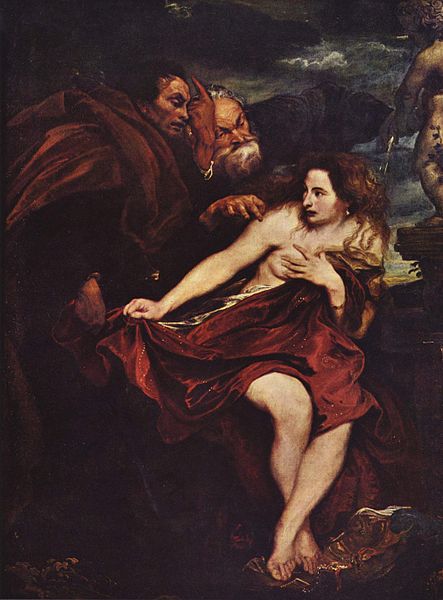
Last week I’ve described my pornographic awakening and the first moments of porn arousing me. I’m deliberately using the term awakening, because this moment had a quasi-religious feeling in retrospect. Okay, let’s hold our breath for a moment.
Porn and religion? Serious?
Please forget your Calvinistic or Puritan socialization for a while. This is about the religion your iconoclastic forefathers were fighting: the old one, with portraits of Godfather in the clouds, Jesus, and the saints. The depiction of human beings has an even longer tradition, of course, but after the fall of the Roman Empire and the following Migration Period, the art of portrait painting had to be learned all over again, and early medieval portraits were usually depicting important people – and saints.
Basically, there were two types of sacred paintings: the older ones, being regular portraits, and the narrating ones, depicting scenes from the Bible or from the saint’s life. Usually something extraordinary was happening in the latter group of images: dramatic moments of enlightenment, of ordeal, rapture, and triumph. Imagine what these images added to the holy words people were listening to (but usually weren’t understanding, because the mass was celebrated in Latin language). Since most of these people were illiterate these images gave them an understanding of the stories in the Bible and the lives of the saints.
Showing the intangible
The difficult task of Christian art is to depict the unspeakable and unrepresentable: a man walking on water. The creation. The Ascension. Visions of heaven and hell. Designs of different qualities have been made, and many artists have set an example. Study the works of Hieronymus Bosch and you know what I mean.
Depicting the unspeakable and outrageous: you can breathe out now, we’re back into our time. Religious art means depicting things that are beyond expression. Extraordinary things that are bigger than life, that are changing one’s life and even the whole world. Towards a better future, even a better world.
Where’s the porn, you ask?
There are numerous examples for religious pattern in pornographic imagery. Regular visitors of this website know that Ruby Day has been portrayed twice as a porn saint. See here and there. Even more obvious references to Christian iconography can be seen in this portrait of Bobbi Starr.
While religious art describes a spiritual act, pornographic imagery is purely carnal. Both arts are like an object and its mirror image. While religious art depicts the apotheosis, a spiritual ecstasy, the sublimation of all human desires, pornography is depicting the ecstasy of the physical body in all its manifestations, including the orgasm as a kind of redemption. Both arts are failing at this, though: the spectator doesn’t get the real experience, just an idea of it. But both of them give an idea of the absolute climax, the neverending and pure bliss, be it a spiritual or a carnal one. Studying both kinds of imagery will result in a ritual act: masturbation and prayer. Both of these are getting you closer to the depicted content.
Spiritual vs. carnal ecstasy, porn with roots in art history: that’s strong stuff. Share your opinion in the comments.
Stay curious,
Mason Squelch
(Post Image: Anthonis van Dyck, Susanna and the Elders, 17th century. Source: Wikipedia)





I often have thought that many religious pieces of art depict a very carnal desire or the human desire of carnal thoughts. Your tie of pornography and religious art history is well done! I love the paths in which you take to show the commonality between the two. Plus the religious history is a bonus!
Thank you! We’re just scratching the surface, but I think further studies should focus on phenomena such as ecstasy, redemption, rapture. Glamour photography has similar features, but only pornography dares to cross the border.